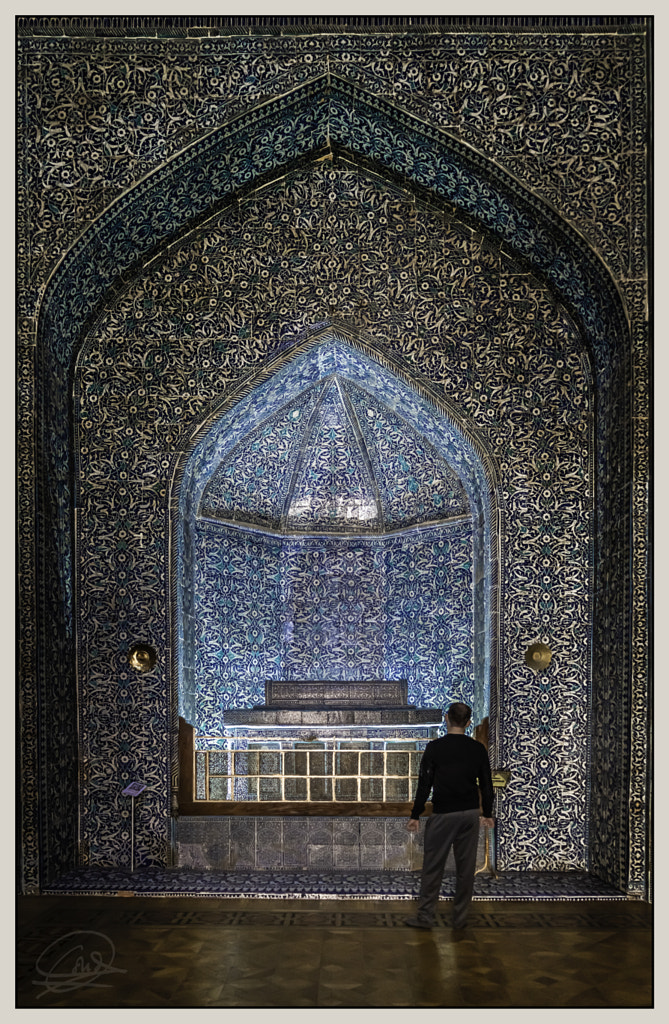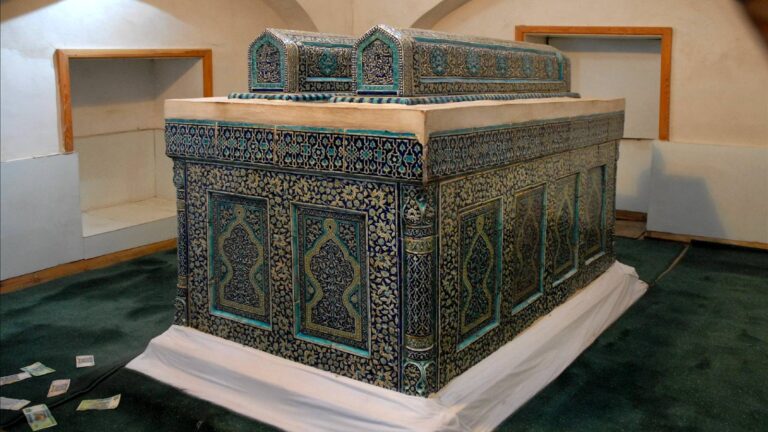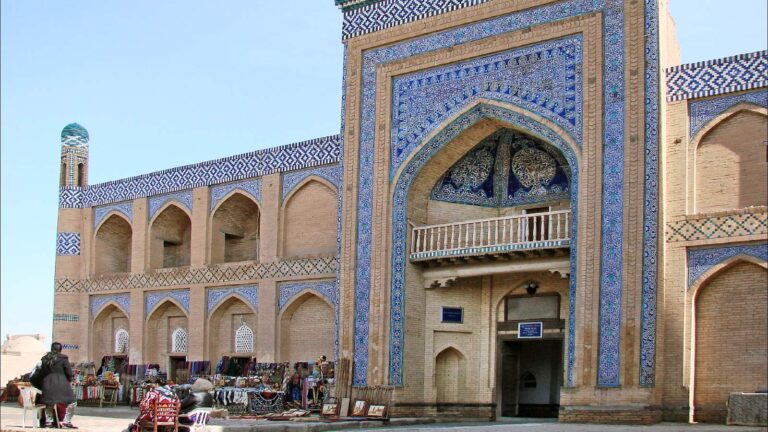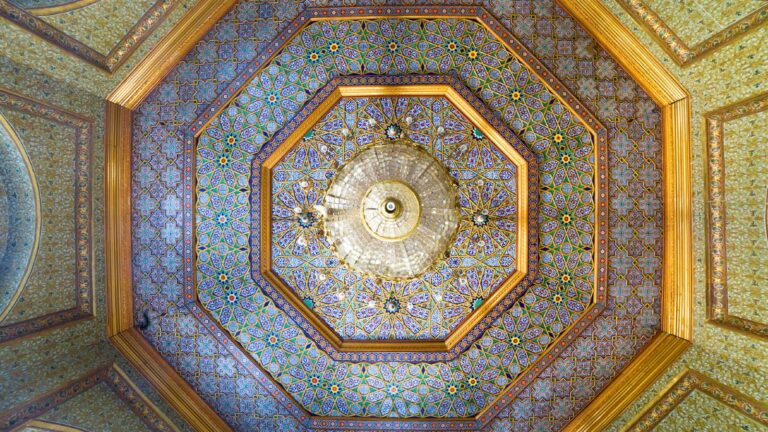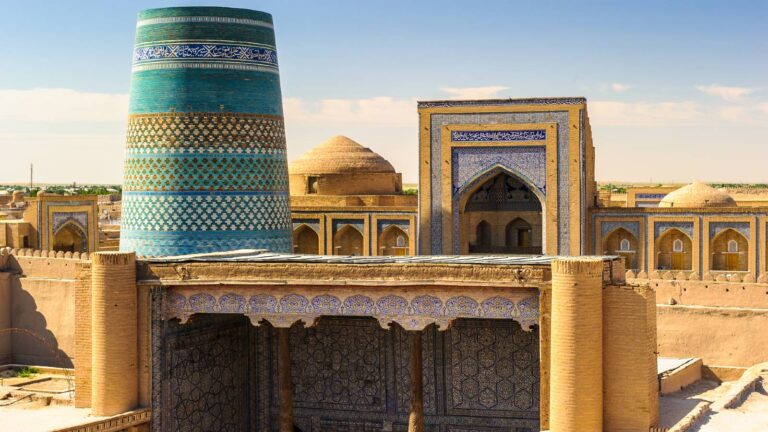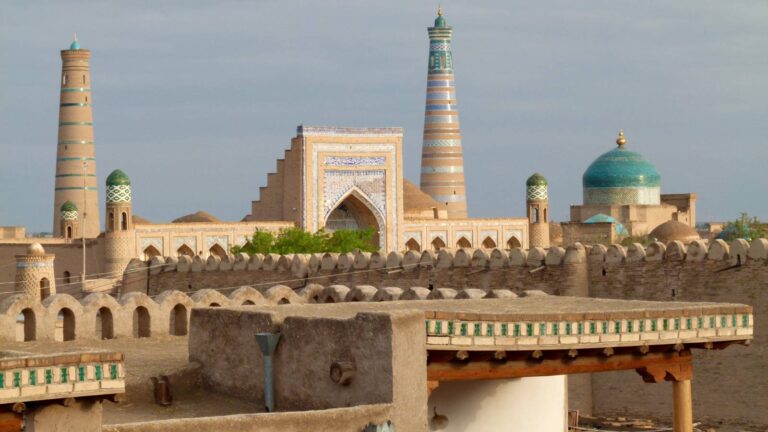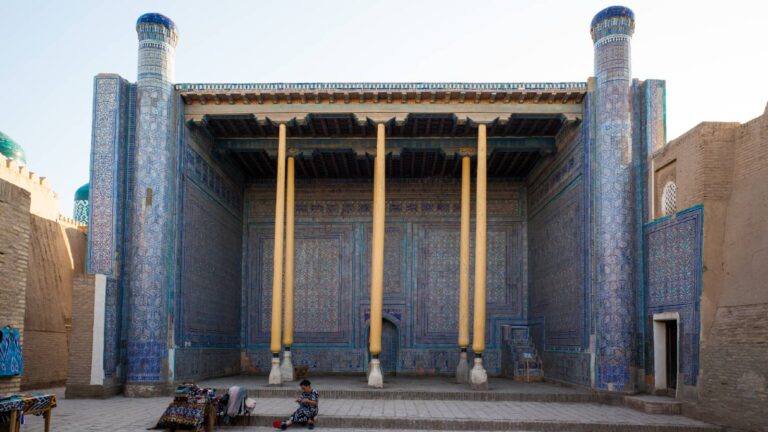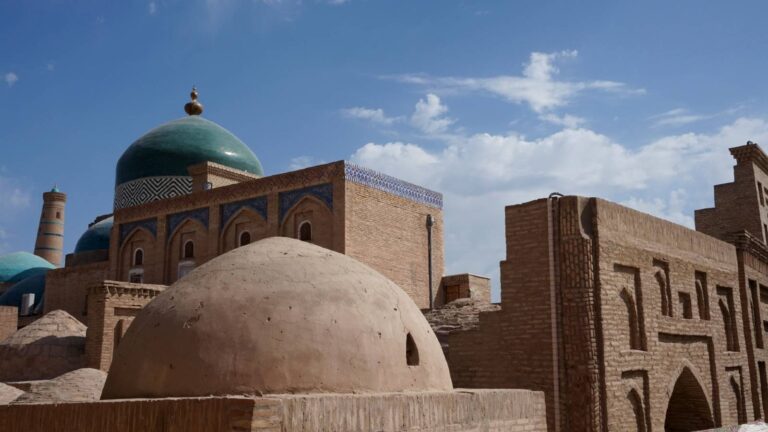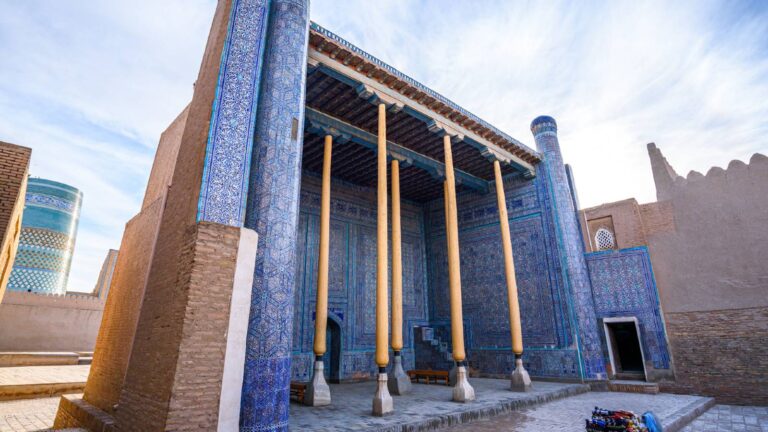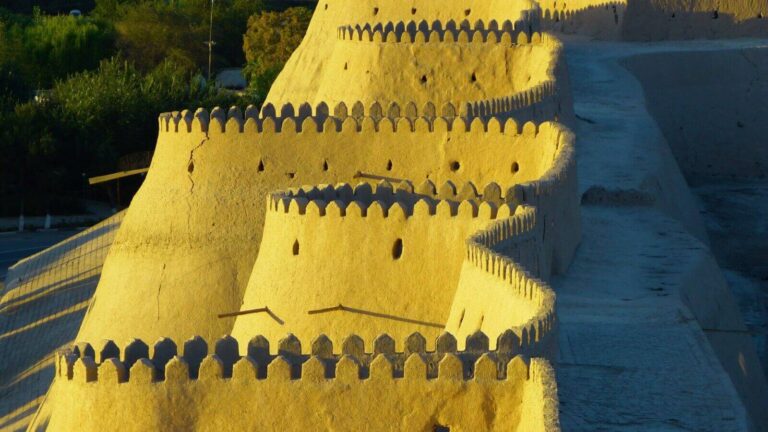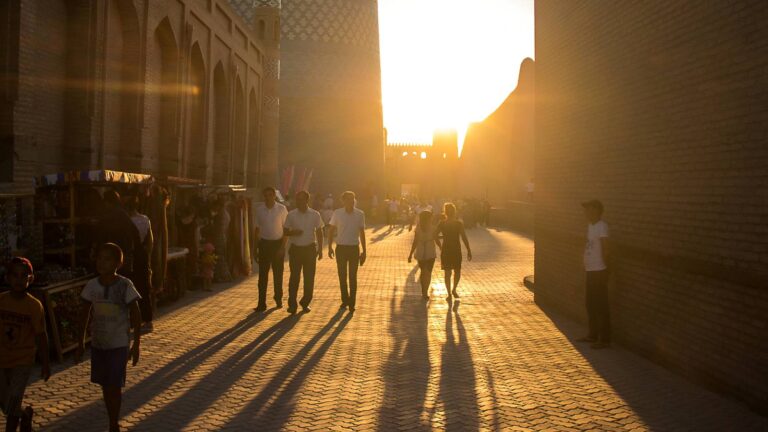Getting There
Located in the center of Ichan-Kala, All types of transport are available to get to Khiva, Ichan-Kala. The International Airport is located in Urgench. From Urgench to Khiva 30 km. There are buses, trolleybus, minibuses and taxis.
What to Expect
The mausoleum of Pakhlavan Mahmud (1247-1326) has long been considered a sacred place where Uzbeks, Turkmens, Karakalpaks and representatives of other peoples made and continue to make pilgrimages.
According to his will, Pakhlavan Mahmud was buried in his own leather tanning workshop. Over time, a revered pilgrimage site arose here, and later a complex named after him arose.
Pakhlavan Mahmud, who lived in the XIII century, was a local poet from simple artisans, who was also famous for the heroic strength of an invincible fighter and the ability to heal people. His grave was in the cemetery behind the Juma Mosque. The local oral tradition contains a description of many details related to the life and exploits of Pakhlavan Mahmud. Since ancient times, he has been revered here as a pir, that is, the patron saint of the city.
History
Around the grave of Pakhlavan Mahmud, a complex of monuments was built, built at different times (1664-1913). Its overall dimensions are relatively large (50×30 meters), and the first to appear here in 1664 was a small mausoleum over the grave of Pakhlavan Mahmud. In the 17th century, the entrance portal to the mausoleum was built on the south side.
Judging by the inscriptions on the door, the whiter large-scale construction began in 1701 by Shahniyaz Khan (1698-1702). In 1719, Shergazi Khan, building a new madrasah to the south of the cemetery, oriented it to the Pakhlavan Mahmud Mausoleum.
In 1810, after a successful campaign against Kungrad, Muhammad Rahim Khan I decided to radically change the ensemble. Later, the building stretched east and partly south of the original mausoleum. In 1810-1825, a richly decorated mausoleum, a room for pilgrims (ziarat-khan) and a khanaka were erected. Members of the khan’s family were buried in the family crypt attached to the mausoleum. Some rulers of Khorezm were buried here: Abulgazi Khan, Shahniyaz Khan, Temur Gazi Khan, Muhammad Rahim Khan I.
The marble tombstones of Abulgazi Khan (1663) and Anusha Khan (1681) were moved to a new building and were installed after the burial niche of Muhammad Rahim Khan I.
In 1913, in the western part of the complex, two premises were built for the reciters of the Koran (kari-khan) and, on the contrary, a terrace (aivan). And also, in the courtyard in front of the mausoleum, a two-story building was erected. The burial vaults of the mother and sons of Isfandiyar Khan, as well as the burial place of Isfandiyar himself, are located in the rooms of this building.


